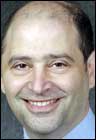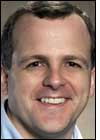After several years of testing RFID to track patients and staff members in its operating room (OR) department, Massachusetts General Hospital (MGH) is now rolling out the same technology in a more challenging environment in which patient movement is not nearly as predictable—at medical clinics throughout the Boston area. Provided by Radianse, the system, known as Radianse Reveal, includes active 433 MHz RFID tags in the form of badges worn by workers and patients. Thus far, three clinics are employing Radianse Reveal, with the system slated to go live at another five locations by the end of the first quarter of 2010.
“Our incentive is to gain a better understanding of how our clinical systems behave,” says James Stahl, a medical doctor and senior scientist with MGH’s Institute for Technology Assessment. Unlike the tracking of assets or patients through an OR, tracking patients’ movements through a clinic, Stahl says, “is a very complex system in terms of how resources are managed.”
While the goal is to provide patients with better access to care, understanding the movements of those patients and the care they receive is a daunting task that must be undertaken before MGH can determine how such a scenario can be improved. No patient is like any other, nor are his or her conditions and the treatments he or she requires. Although clinics can use anecdotal evidence to determine whether care is being provided as efficiently as possible, without a good means of measuring each visit, it’s difficult to know what improvements to make. For example, it’s not easy to track where delays had occurred, whether a physician spent the proper time with a patient, or how long a patient sat alone in an examining room.
The three MGH Boston clinics utilizing the system typically serve 20 to 40 patients per physician each day, with approximately three physicians at each location. Two of the clinics installing the system see patients on a scheduled basis, while one is a walk-in clinic.
In 2005, Massachusetts General set up a trial of Radianse RFID technology to track employees and patients in its OR unit. At the time, Stahl served as the research director of the trial project, known as the Operating Room of the Future (ORF). The project’s goal was to determine whether RFID technology could track the movements of patients and staff members, and improve the operation room workflow based on that data. The technology is still in place in the OR, Stahl says, but has been deactivated for the time being.
The use of RFID at the clinics is a permanent deployment that will initially be employed for business analytics, Stahl says; in the future, however, the technology is expected to be used by the staff for alerts and real-time locating. As a physician, Stahl suspected that the medical clinics could be made more efficient, but he lacked sufficient data to enable the hospital to understand the systems, and how patients received their care. “People are complex,” he states. “To understand the system behavior, you need to use a tool like RFID.” The hospital wanted to be able to track not only patient flow at its clinics, but also where people come together, in order to learn how much time patients were spending one-on-one with physicians. With the RFID system, Stahl reports, they now have the infrastructure to begin studying how the clinics function.
Each physician is assigned a Radianse ID badge that can be pinned to a jacket or attached to a lanyard. The unique ID number encoded to the badge’s battery-powered 433 MHz RFID tag is linked to the physician’s name in the Radianse software. Radianse readers installed in the clinics’ ceilings receive that ID number, transmitted by the tag at a rate of every 10 seconds. The readers, with a read range of approximately 30 feet, can pinpoint a tag’s location within about 3 feet, using triangulation. Typically, at least three readers capture a tag’s transmission at any given time. About 15 to 25 readers are installed at each site, based on a clinic’s size, says Steve Schiefen, Radianse’s president and CEO.
When a patient arrives at the clinic, he or she is registered and given a Radianse ID badge. The staff member first inputs information regarding the patient, then scans a bar code on the tag to link that individual with the ID number encoded to the badge’s RFID tag. From that moment, the patient’s whereabouts within the building can be tracked. The system stores data regarding where the patient goes, how long he or she remains in any particular location, and the length of time the person spends with clinical employees. At the end of his or her visit, the patient places the badge in a basket at the reception desk so that a subsequent patient can reuse it.
Workers could sign into the Radianse software to locate a specific patient in the facility at any given time, Stahl says, though at this stage, the system is being used for historic information—to determine what may be a bottleneck in the system, for instance. The clinic can also study the impact of any change in patient care that it might introduce. For example, if the center begins utilizing a new electronic medical records system, the Radianse data could be analyzed following that introduction, in order to determine how the new system affected patient flow.
“This, I think, is the first time we’ve been able to unobtrusively capture actual behavior,” Stahl says.
Once the system proves able to provide useful business analytics, such as the number of patients for whom the clinic can care on particular days, and with specific staff members, Stahl says he hopes to see the system also used to send alerts to the staff if a patient goes to an area of the clinic where employees do not expect him to go. He also anticipates the system will be used to send an alert if a patient is made to wait too long in an examining room.



